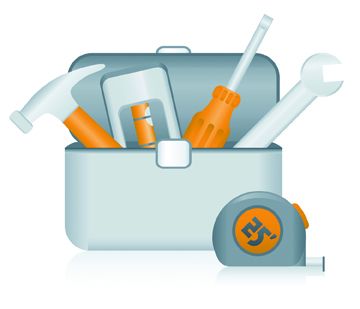
December 2015 Management Toolbox

Personal Development Exercises for Business Executives
As a manager in your organization, part of your role is to guide the development of others and encourage them to strive for excellence. But in order to successfully help others learn and grow in their careers, you also have to focus on your own development. As 2015 comes to a close, following are some activities you can resolve to engage in next year to become a better, stronger leader and role model.
Review and reflect. If you want to get better at what you do, you have to study what you’ve done and learn from it. Maintain a written record of both the work you’ve accomplished and the items you’re in the process of working on. Then, once or twice a year, make time to review that record. Determine what you do well, the areas in which you perform less than optimally and, finally, where you should focus your future efforts to deliver the most value to your company.
Have honest conversations. Do you know how your actions affect your co-workers? Do they know how their actions affect you? If you aren’t sure about the answer to either question, make it a point to start having direct, one-on-one conversations with the people you work with each day. Ask what you do that helps them perform well and what you do that hinders them from doing their best work. Then, have your colleagues ask the same questions of you. Candid discussions can make a world of difference in terms of your development and the development of others.
Study other people. Is there something in particular you’d like to be able to do better? Maybe there’s a piece of software you’d like to master or perhaps you want to become a more engaging public speaker. There are a number of ways to develop and improve yourself, but one way is to study someone who has already mastered the skill you want to hone. Establish a relationship with that person and seek their advice. Ask them how they got started and what specific steps they took to achieve their current level of proficiency, and see if they’d be willing to let you periodically observe them as they use their special skill.
Do something different. For many, the root of boredom and burnout is performing the same tasks day after day. But by beginning a new activity – such as taking a class, picking up a new hobby or doing volunteer work – you’ll often be forced to use different parts of your body and brain. Typically, you’ll also acquire new skills and interact with people you wouldn’t have otherwise encountered. These learning experiences can foster personal growth and leave you feeling rejuvenated, not to mention you may be able to apply what you learn to your full-time work.
Ask yourself how you want to be remembered. What’s your goal in life? When you die, what do you want people to remember about you? You may have a variety of goals and aspirations, but determining how you want to be remembered is a key to self-development. That’s because once you figure out what you want your legacy to be, you can begin taking the steps necessary to make that goal a reality.
*****
4 Steps to Developing High-Performance Teams
Every successful company needs strong teams in order to accomplish all the work to be done. Figuring that out is the easy part. It’s the act of assembling the right teams and helping them to work as cohesive, productive units that is much more complicated. And while there’s no 100 percent foolproof formula you can use to develop a high-performing team, following these four steps can help.
1. Determine the work to be done. If you’re in charge of establishing a new team, before you do anything else, you must establish the team’s purpose as well as a strong outline of the work to be accomplished to fulfill that purpose. Quite simply, you have to know what you’re trying to do before you can find the right people to do it.
2. Choose team members. Once you have identified the team’s purpose and the work to be done, you can match those tasks with the skills of your employees. It’s during this part of the process that a skills matrix can be helpful. This type of matrix lists every company employee and the functions they are most capable of performing.
Selecting team members, however, is not just about matching skills to tasks. You also want to keep in mind how team members will work together; if you feel certain individuals will clash and inhibit the team’s ability to achieve its goals, it may serve the company better to go a different route. A team’s members don’t always have to agree – in fact, respectful disagreement can sometimes be beneficial – but success will be difficult if not impossible if individuals can’t figure out how to peacefully coexist.
3. Provide leadership. You have several responsibilities when you oversee a team. The first is to clearly communicate goals as well as each team member’s responsibilities. You must be available to answer questions and offer counsel. It’s also your job to monitor the progress of the team. But you should delegate to the group the responsibility of deciding how the work will be done. After all, you chose these particular individuals to work together because you feel confident in their abilities. There’s no need to tell them exactly how to do that work every step of the way.
4. Celebrate success. When the team meets a goal or some other milestone, acknowledge the accomplishment and thank them as a group. Recognition and positivity breed camaraderie and a greater sense of loyalty to the team and the company, both of which are essential in a successful organization.

